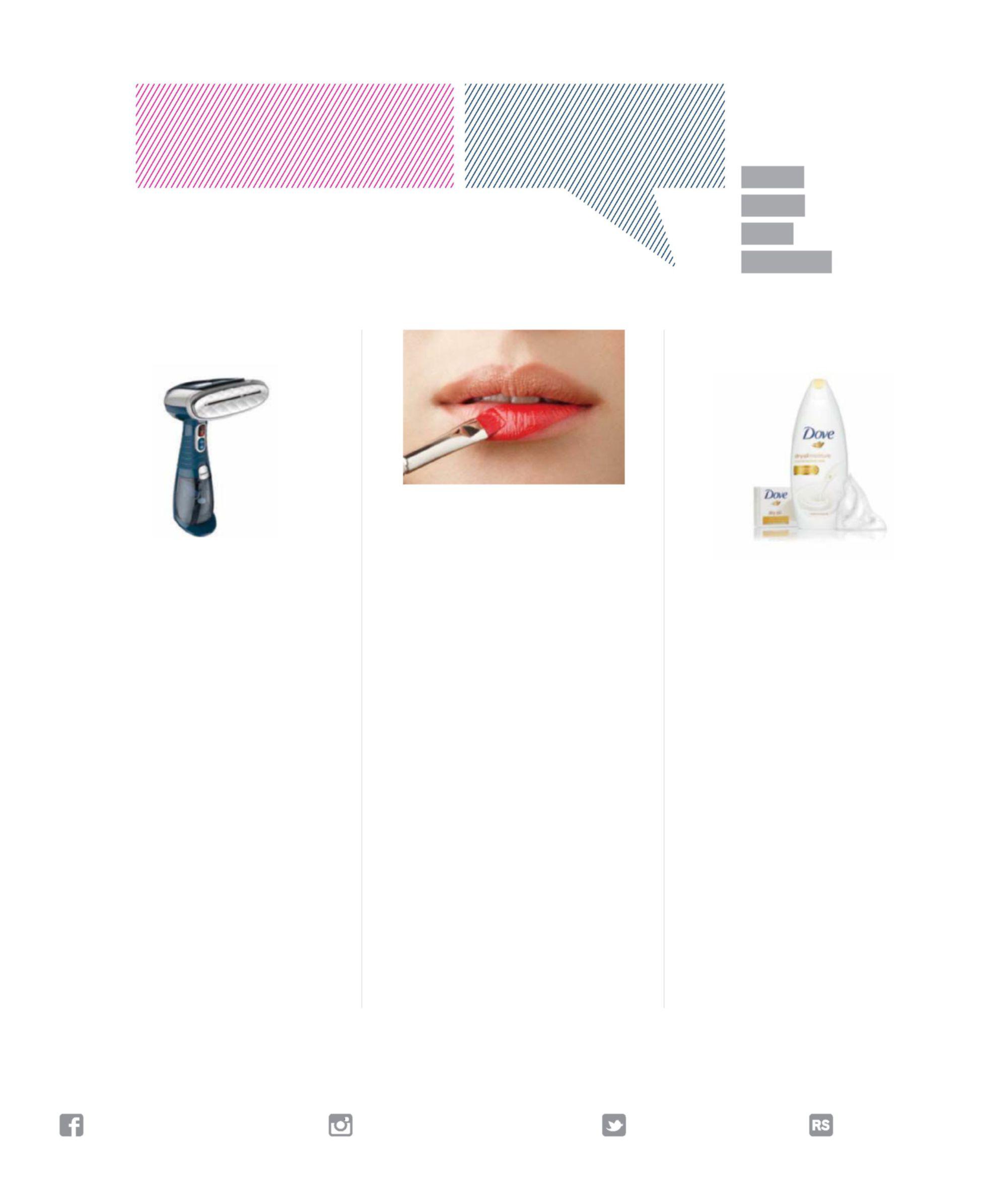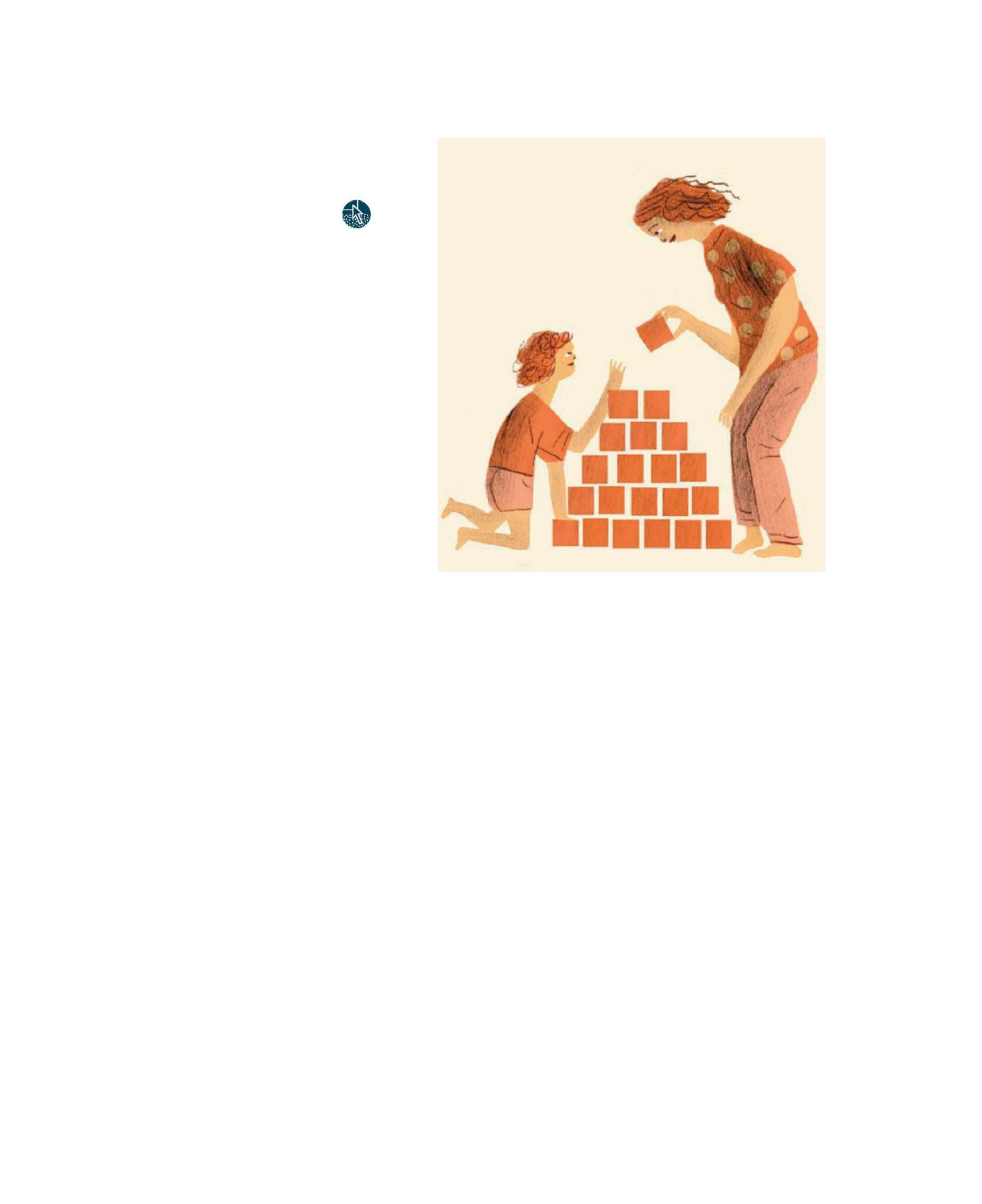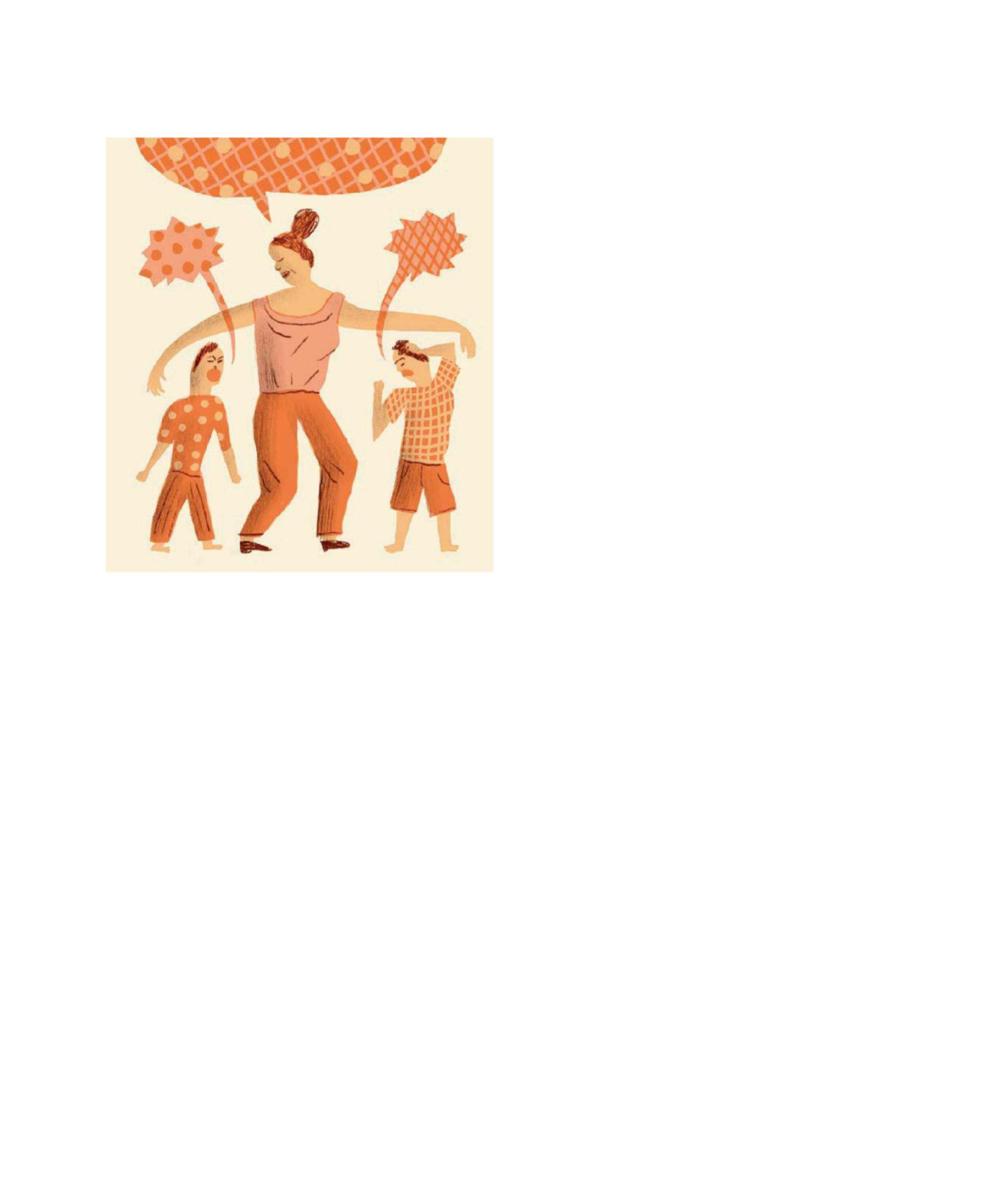
10 minute read
HEALTH
1
NICE EXTRA Vertical buttons and seaming draw the eye downward for an elongating effect.
Advertisement
HOWTO WEAR
2
FIT TIP Tuck in a blousy topto balance proportions.
3
fashion
STYLE UPGRADE The contoured tops of these booties show off ankles and keep legs from looking stumpy.
GAUCHOS
Falling to midcalf, this cut has the look of a mid-length skirtwith allthe comfort of pants, saysAlison Deyette, a LosAngles–based stylist.Since the hem hits at thewidest part of thelower leg, choose shoeswith some height tokeepyou looking long and lean.
HOWTO WEAR THEM 1 OFFICE CHIC
This crisp, camel-hued style stands out in a sea of black and navy work pants. A knit top and sleek accessories polish off the look. Tall? You can pull these off with flats. If not, add heels for a little height.
2 ARTSY
A traditional glen plaid feels anything but whenpaired with a rich jacquard top trimmed with leather and fringe. Bold accessories (sparkly earrings, edgy booties) push the boundaries in a good way.
3 GLAMOROUS
Give your LBD the night off and try this figurefriendly spin on tuxedo pants instead. (The wide cummerbund waistband flatters curvier midsections.) Finish them off with a shimmery gold blouse and black pumps.
TO BUY 1: ANN TAYLOR PANTS, $119, ANNTAYLOR.COM. RD STYLE SWEATER, $72, RDSTYLE.COM. NINE WEST FLATS, $89, NINEWEST.COM. LULLA COLLECTION BY BINDYA SCARF, $75, ZAPPOS.COM. BANANA REPUBLIC BAG, $188, BANANAREPUBLIC.COM. 2: J.CREW PANTS, $148, JCREW.COM. ETIENNE AIGNER TOP, $325, ETIENNEAIGNER.COM. KLUB NICO BOOTIES, $215, KLUBNICO.COM. CHLOE+ ISABEL EARRINGS, $48, CHLOEANDISABEL.COM. 3: COOPER& ELLA PANTS, $140, COOPERANDELLA.COM. ALICE+ OLIVIA BY STACEY BENDET TOP, $285, ALICEANDOLIVIA.COM. SJP BY SARAH JESSICA PARKER HEELS, $350, BLOOMINGDALES.COM.
1 HOWTO WEAR
2
NICE EXTRA Cinch the builtin belt to lend curves to a straighter figure.
3

fashion
STYLE UPGRADE To take this look from day to night, lose the blazer and add a metallic clutch.
FIT TIP This pair’s waistband is elastic, for a truly comfortable fit.
FULL LENGTH
Universally flattering, this elongated, flared style should hit between the anklebone andthe floor, saysAmanda Kraemer, the style directorat Loft. Look for tall or petite sizingwhen appropriate to ensure that the length is scaled toyourproportions.
HOWTO WEAR THEM 1 CLASSIC
A true wardrobe staple, this black cotton pair works 365 days a year. Pull on a soft blazer when temperatures dip, or wear with a silk tank come spring.
2 SOPHISTICATED
Think white trousers won’t flatter your frame? Think again. This pair’s structured fabric won’t show lumps or bumps. For contrast (and warmth), add a crew sweater, a faux-fur scarf, and leopard heels.
3 LUXE
Silky pajama-style pants feel light-years away from loungeware when styled with structured pieces, like a dusty rose buttonup and a cool navy vest. Glittery smoking slippers and a navy stole take it to the next level.
TO BUY 1: CANVAS BY LANDS’ END PANTS, $125, CANVASBYLANDSEND.COM. L.K.BENNETT TOP, $325, LKBENNETT.COM. MASSIMO DUTTI JACKET, $245, MASSIMODUTTI.COM. J.CREW PUMPS, $278, JCREW.COM. ELIZABETH COLE JEWELRY EARRINGS, $243, ELIZABETHCOLEJEWELRY.COM. 2: HALSTON HERITAGE PANTS, $295, HALSTON.COM. JOE FRESH SWEATER, $49, JOEFRESH.COM. ELLIE KAI FAUX-FUR SCARF, $78, ELLIEKAI.COM. SAM EDELMAN PUMPS, $150, SAMEDELMAN.COM. POVERTY FLATS BY RIAN CLUTCH, $68, POVERTYFLATSBYRIAN. COM. H&M EARRINGS, $10, HM.COM. 3: LOFT PANTS, $70, LOFT.COM. AYR TOP, $225, AYR.COM. MASSIMO DUTTI VEST, $225, MASSIMODUTTI.COM. NIC+ ZOE FAUX-FUR COLLAR, $108, NICANDZOE.COM. SOLE SOCIETY FLATS, $70, SOLESOCIETY.COM.
BRIGHT IDEAS
OFFERS
EVENTS
FINDS
GIVEAWAYS
MAKE LIFE A LITTLE SMOOTHER™
Got wrinkles? Forget the ironing board. Turn on the steam! Turbo ExtremeSteam® by Conair® instantly smooths out wrinkles—even on delicate fabrics and trims. Hit the TURBO button and go for the deep ones on heavy coats and sweaters that get packed too close. A builtin creaser presses pants like your dry cleaner, and you can use the aluminum steam plate like an iron.

When you’re done with your clothes, use it on curtains, or you can freshen pillows, couches, and even that doggie bed. No need to worry about bedbugs or dust mites, either. Just turn on the steam and say good-bye. Best of all, it’s all-natural—it runs on water. Check it out at conair.com.
DISCOVER THE NEXT NEW LIFESTYLE
Meet the RS Marketing Team—we’re just like you. Always on the lookout for the latest trends, fitness crazes, perfect gift ideas, hostess tips, and cupcake flavors. We will also show you which blogs to obsess over with our A-List Blogger Network. Find out what we can’t stop talking about.
LIFESTYLERS BLOG: Designer interviews, a review of that spin class you’ve been dying to try, and the perfect weekend cocktail.
BRIGHT IDEAS: Giveaways, special offers, events…did we mention giveaways?
FACEBOOK: Don’t miss our innovative recipes from partnerships, insider coverage, and more.
TWITTER: See what goes on in the RS Marketing offices, and get lastminute updates.
INSTAGRAM: @realsimplelifestylers
PINTEREST: RealSimpleLifestylers
Discover us today at rslifestylers.com.
NEW DOVE WITH ARGAN OIL
Shower away dry skin with NEW Dove Dry Oil Body Wash and Beauty Bar with Moroccan Argan Oil, which nourishes and protects from dry skin in the shower.
Dove Dry Oil Moisture Body Wash replenishes 12x more skin natural nutrients and features a unique formula with a blend of Moroccan argan oil beads, leaving dry skin softer and smoother after just one shower.
No other bar hydrates skin better than Dove. With our signature 1⁄4 moisturizing cream, the Dry Oil Beauty Bar gently cleanses, leaving your skin soft and smooth. Dove is not a soap: It’s a beauty bar, and does not dry your skin like ordinary soap. Find out more at dove.com.
YOU FEEL ME?
If so,you probably have a smidge of empathy. It’s a powerful—and currentlytrending— character trait. It stops bullying! Builds bridges! Helps kids get into college! Andthe best news:You can cultivate more. Here’s how.

Written by Yelena Moroz Alpert Illustrations by Lilli Carré
LET’S START WITH A POP QUIZ: Do youknowthedifferencebetween empathy andsympathy?“Sympathy isfeeling for someone.Empathy is feeling with someone,”saysMichele Borba,Ed.D.,an educationalpsychologistand theauthorof UnSelfie: Why EmpatheticKidsSucceedin Our All-About-MeWorld. Another way to think of it:Sympathyis observingapaintingina gallery; empathy isbeing in thepainting. Itisenteringintoanother’sreality, whetherthatissomeone’spainor simply a differentway oflife,and valuing that person’s feelings.“And with empathy,there is always a dance betweenemotions, cognition, andbehaviors,”says Roman Krznaric, Ph.D.,thefounding facultymember attheSchool of Life,inLondon,and theauthorof Empathy:WhyItMatters,andHow to Get It. For example, youseeanewcoworkerfidgeting duringtheweeklymeeting.You noticethatshelooksnervous; empa-

family thyhelpsyou relate to thefact that we’re alla little unsureofourselves in thefirstweekatthe office, soyou then act:You invite her to grab lunch, tomake herfeelmoreatease.
Researchshowsthat practicing empathyboostsyour ownhappiness andself-esteem.Andempathetic kids arelesslikelytobullyordiscriminateagainstpeoplewhoare notlikethem.Also,according to a 2014study by theMomentousInstitute,a Dallas-basedorganization that provides therapeutic andeducationalservicestokids,higher empathy inelementary-agekids correlatedwithhigherreadingand math scores.“Parentssometimes thinkthat empathy is lockedupin geneticsorhappens bychance. They don’t realizeit’ssomething they canworkon,”says Borba.
Weareall bornwith a capacity for some empathy. (A 2016 research review published in InfantBehavior and Development notedthatdayold babiesshow more distressover otherinfantcries than theirown.) But that capacity isnot set. Itcan be gained...or lost.In infancy, thebrain makesmirror neurons—cellsthat fire upwhenwesee othersexpress anemotionandthen signal our brainto feel thesamething.Aswe growolder, ifwe’reintunewith others’emotions,thebrain develops neuralpathways—think ofthemas trails that eventuallyturnintoa solidroad—sothatwe canpinpoint someone’sfeelingsmorequickly insteadofhavingtopaveanew pathevery time.But environmental and socialfactors—let’scallthem weeds—are constantlytryingto erodeourempathicinstincts. Today’scultureandlifestyletend toprioritizepersonal successover concernfor othersand the common
CUE COMPASSION Get more tips from expert Michele Borba on raising kind, empathetic kids at realsimple. com/empathy.
good, says RichardWeissbourd, Ed.D., thefacultydirector ofhuman developmentand psychology at the HarvardGraduate School of Education. “Parentssaytheywant kidswho arecaring, butmany are focusedon immediate happiness and achievement instead,”hesays. “Buthelpingkidsvalue otherpeople isdeveloping theirhumanity.” Sohowdoyoustart to cultivateit— and keep outthoseweeds?Follow this advice.
HOW TOCREATE AN EMPATHY-BUILDING ENVIRONMENT
Raising empatheticchildrenwhen you,yourself,don’tpracticeempathy isvirtually impossible. “You don’tteach childrenempathyby tellingthem aboutit,”saysKrznaric.
Prioritize face time
Emotional literacy, or correctly interpretingfacial expressions, isvitalin developingempathy. It’s harnessed throughcontinuousexposure to face-to-faceinteractions,whichare then memorizedvia thoseimportant mirrorneurons.“Face-to-face encountersarewherewe learn to put body language, eyecontact,and voicetonetogether,” says Sherry Turkle,Ph.D., a professor of social studiesofscienceand technologyat theMassachusetts Institute ofTechnology andthe author of Reclaiming Conversation:ThePowerofTalkin aDigital Age. Youknowwhere this isheaded:Everytimeyou talk to yourchildwithoutlookingupfrom a screen, not only areyoumissing opportunitiesto readhis face and better understandwhatheisfeeling butyourchild (especiallyif he’s young) is also missing an opportunitytodo the same andbuild his

family emotional vocabulary.“Itisvery likely that mirrorneuronsarebuilt byconnecting what wedo with what wesee,”says MarcoIacoboni, M.D., Ph.D., aprofessorof psychiatryand biobehavioralsciences at theDavid GeffenSchoolofMedicine atUCLA and theauthor of Mirroring People: TheScience of Empathy andHow WeConnectWithOthers. “IfI smile andyousmilebackat me,my brain can associate themotor plan for smilingatthe sight ofsomeone else’s smiling face.”So curbyour impulsetomultitaskbetweenthe digitaland realworlds.“Whenyou’re face-to-face, it sendsa message thatthepersonyou’retalkingtois important,” says Iacoboni.
Follow the platinum rule
It’sthis:Dounto othersasthey wouldhaveyoudountothem.In otherwords,thinkabout howthat person wouldwant you to treat him, not howyouwouldliketobetreated. “Kidsneedtounderstandthatsomeone elsemight seetheworlddifferently,”saysKrznaric.This rule appliesbeautifully duringplaydates. Beforeyourson’sfriendscomeover, havehimbrainstorm howthe guests mightwanttoplay. Ifhereaches for hisfavorite caboose,say,“Iknow you love trains, butdoesJames? Last time he really enjoyed soccer.”
Watch your words
Specifically,when it comes to conversations about school.Always asking about assignments can send the signal that success trumps consideration for others.That’s not to say that doingwell in school or sports isn’t important—it just shouldn’t be the only topic. “Tune in to the daily messages thatyou sendyour kids and see if anything needs a flip,” says Borba. “Maybeyour language needs tweaking to include praise for character and compassion and not just performance.”Whenyour child has a conflict, “don’t rush to provide a solution,” says Mary Gordon, the founder of Roots of Empathy, a Toronto-based nonprofit organization thatworks in schools. “Rush to build a connection.”Whenyour daughter says, “Emma made fun of Sarah’s shirt, and I laughed, too,” you can reply, “I’m gladyou told me. Doyou think thatwas right? How doyou think Sarah felt?Andwhat canyou do to make her feel better?” The goal is to pause rather than criticize—and give the child the chance to recognize her feelings.
Let them practice onyou
“Weparentsareoftenhesitant to reveal our fears or lack of confidence becausewe may notwantourchildrento think thatweareweak,” says Borba.Sharingvulnerabilitiesand frustrationsopensupanopportunity foryourkidstopracticeempathy
Speaking of the office… Being an empathetic coworker can pay off— literally. A 2015 study published in Leadership Quarterly showed that leaders, particularly women, who were compassionate and excelled at taking others’ perspectives were more likely to move up. onyou, makingitthat mucheasier toapplyittofuture situationswith peopleoutsidethefamily. Saying, “I hada harddayatwork.Imessedup mypresentation,”demonstrateswhat humiliationmightlooklike.It’salso a chance foryour childtoreplywith “I feelthesamewaywhen I’mcalled onduringclass,”reinforcing those empatheticneuralpathways.
Expand yourcircle
“Wetypicallyhave empathyfor peoplesimilartous,” saysWeissbourd.Lookforopportunities to buildcommunitywithpeoplein your kids’schoolorchurchwho comefroma differentbackground. Or,atleast,saysWeissbourd, “make apointtointroducethem topeoplenotontheir radar: the crossing guard, doughnut-store manager,ormailman.Makethese peoplereal andvisible.”Yourjob as a parentis to showkindnessand appreciationsothatyourchildren seepeopleashumanbeingswho have feelings, insteadoffigureswho move the processalong.“Get them inthehabit of saying ‘Thankyou,’” says Weissbourd. Andpracticewhat youpreach:Thenext timeyou’re temptedtosnapatawaitress becauseyourfood is taking forever, askaboutherevening instead.
PRACTICAL TIPS FOREVERY AGE
Infants and toddlers
Aroundagethree,theempathy that childrenare bornwith(remember thebabiesshowingdistressover others’cries?)startstobecometainted bycultural and environmentalfactors.Toddlersbegin to be moreselec-


family
tive aboutwhom to helpand perceive thosedifferentfromthem as,well,different.That’saninnocuousthing.(People are different.) But that’s whyempathy—identifying with peoplewhoaredifferentandhaving compassionfor theirexperience— needs to be reinforced early on. INVOLVE CHARACTERS. A 2016study published in JournalofChildren andMedia showedthat preschoolerswhoactivelywatchedPBS Kids’ DanielTiger’sNeighborhood showedhigher levels of empathy thandidthosewhowatcheda natureprogram.Why?“Kids may learn better fromTVcharacters thatare relatable and attractiveand whotalk directlytothem,likereal friends,”saysEric Rasmussen, Ph.D., thestudyauthorandanassistant professorintheCollegeofMedia andCommunicationatTexasTech University, in Lubbock.Thelesson: Useadmirablecharactersinbooks andshowstodrive home important points,like kindness,generosity, andaltruism. (Seesidebar, right, foralistofrecommendations.) SAVE IT FOR LATER. “Children thisage don’t learndeepmessagesinthe momentbutin thereview,”saysGordon.Ifthere’sakerfufflewhereyour child makesanother kid sad,wait untilyou’re in the car to reflect calmly. Whydidthefriendfeel thatway? Howwouldyoufeel?Howcould youtreatherdifferentlynexttime?
Elementary school
Children arelearningthelanguage ofempathy,but theyare notyet fluent.Whilethey canrecognize that twopeople canfeel differently inthesamesituation, theyare more comfortablearoundthoselikethem. That’sonereasonwhybullying startstopickupat thisage.
BRING BACK PLAYTIME. Aschildren moveintoelementaryschool,parentsstartto putmoreemphasison learninginsteadof play.“Without unstructuredplaytime—atleast sometime everyday—kids are missingopportunities to learnabout socialcuesandnegotiations,”says Doris Bergen,Ph.D., adistinguished professorofeducationalpsychology emerita at Miami University,in Oxford, Ohio.Simple,unstructured playisaneffectivewayto build empathy. Inaddition, games contributetomoral developmentas well astomany cognitiveskills— they’reessentially dressrehearsals for therealworld. One study published in thejournal ChildDevelopment showedthatchildrenwho shared somethingthattheyhad intheirpossession duringplay withoutbeingasked demonstrated moreconcernfor othersas adults. Whetherthey areactingouta tea partyorapirateship, kidsmust considerotherchildren’s perspectives andsiftthrough ideasto continue. STOP “ING-ING.” Youknow,solving, rescuing, helicopter parenting. It’s importantin raising self-sufficient, confidentkids,but it’salsocrucial inraisingempatheticones.When youintervene,you sendthevibe thatkidsneedhelp.Consequently, kids’ self-esteem,confidence, and couragetodealwithadversitystarts towane. If theylackadequate copingskills,seeingotherpeople’spain canaddtotheirowndistress and
WATCH (ANDREAD) AND LEARN
Research shows that reading literary fiction may improve empathy by providing the chance to imagine what others—i.e., characters in difficult or different-fromyou situations— are feeling. Our experts suggested these empathybuilding books and movies.
BOOKS
The Sneetches and Other Stories
DR. SEUSS
Stellaluna
JANELL CANNON
Charlotte’s Web
E.B. WHITE
The Hundred Dresses
ELEANOR ESTES
Ramona the Pest
BEVERLY CLEARY
The Curious Incident of the Dog in the Night-Time
MARK HADDON
The Grapes of Wrath
JOHN STEINBECK
Night
ELIE WIESEL
MOVIES
Dumbo Inside Out Freaky Friday Billy Elliot Mean Girls The Book Thief The Other Son
shutdownempathycompletely. START EMPOWERING. Helpingyour kids confidently actontheirown canhavea(good)snowballeffect. Accordingto research reviewed in the2016 ChildrenandYouthServices Review journal,whenone personintervenestostopbullying,










